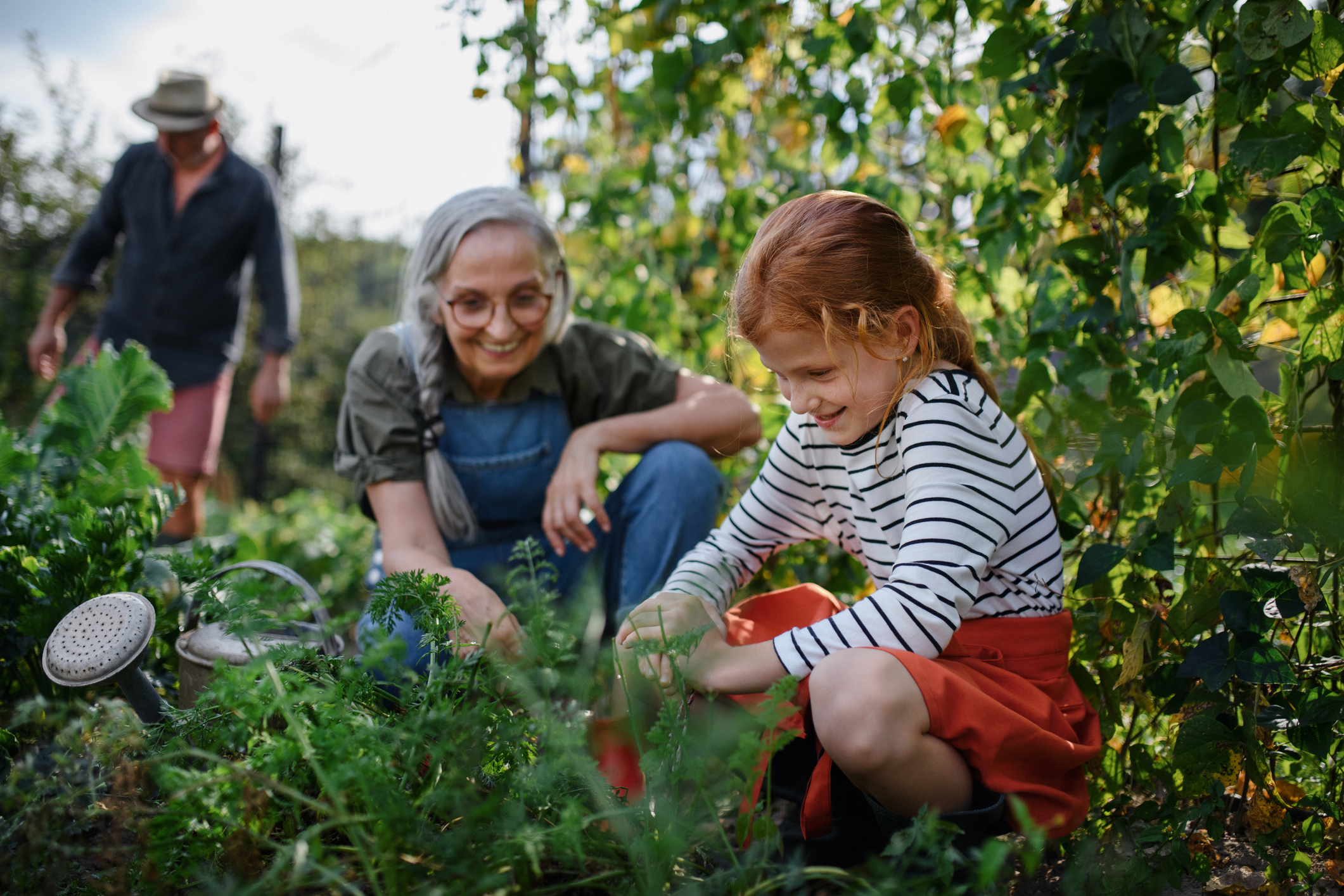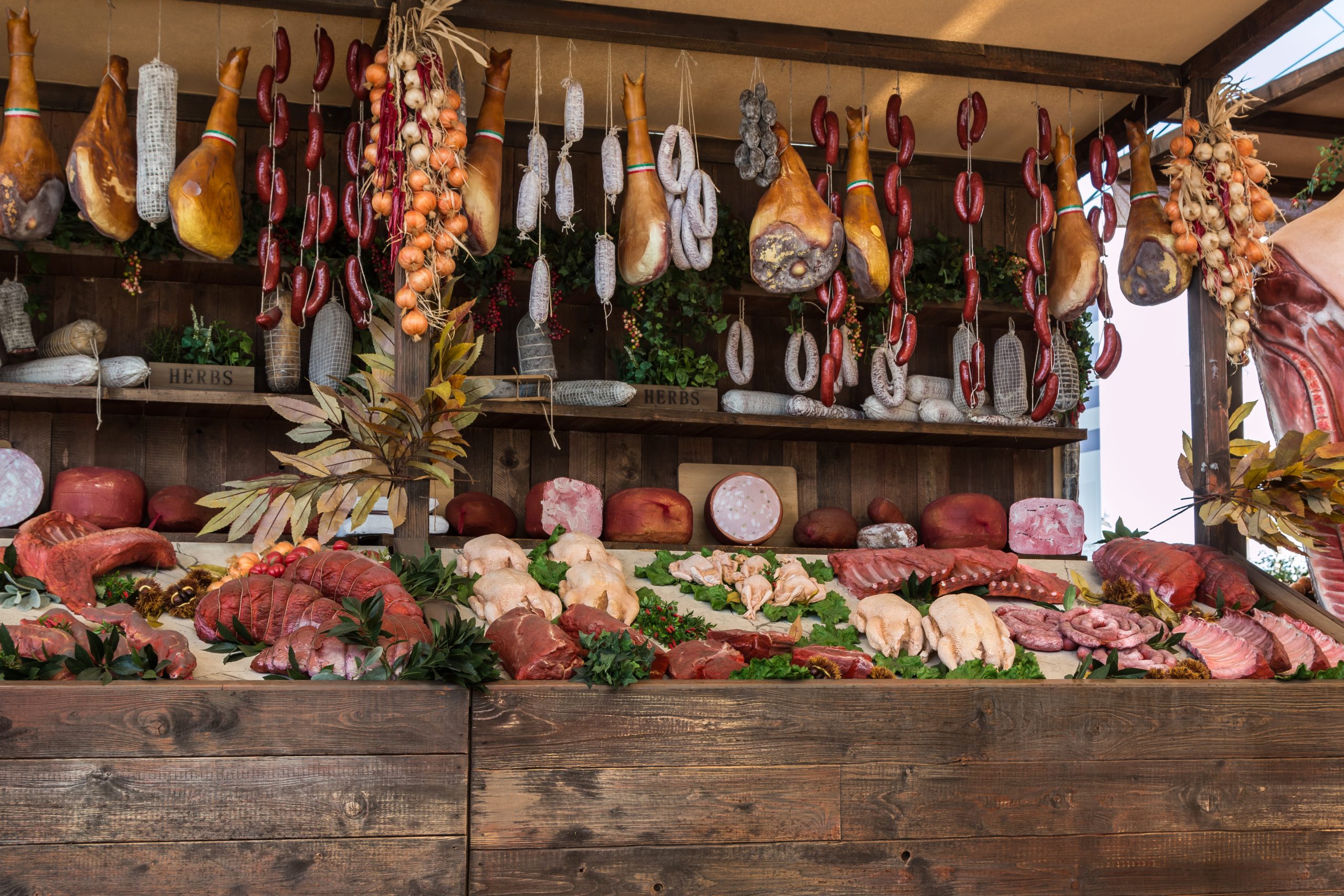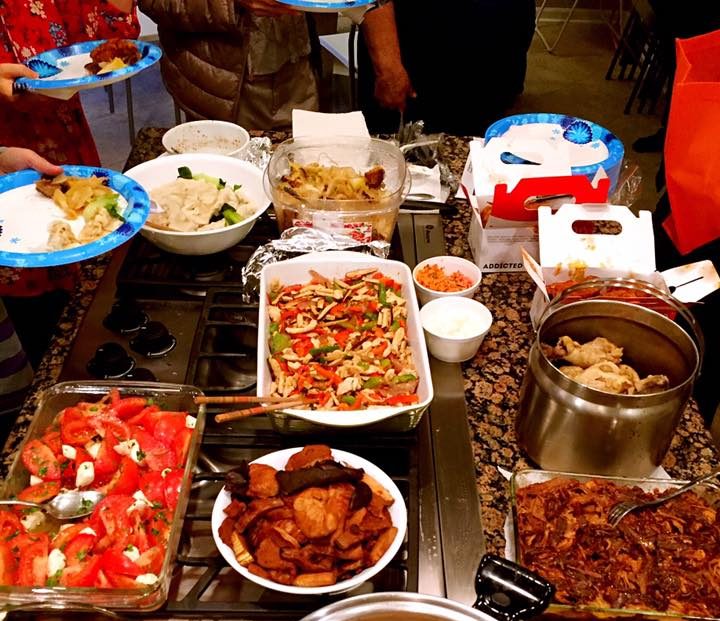Politics is downstream from agriculture.
Digging for Victory

Traditional household gardening provides a model of escape from a future of eating bugs and vat-produced mycoproteins.
“Welcome to sanction-hit Russia, where prices are DOWN as Brits suffer from soaring inflation,” reads a recent headline from the Sun tabloid. For ordinary Brits and Europeans, facing the prospect of a poorer, colder, and darker winter than any in recent memory, the news that ordinary Russians will not be sharing their hardships is bitter news indeed. Aren’t sanctions supposed to afflict the target country?
Beyond the high-profile departures of global chains like McDonald’s and Pizza Hut, which have already been replaced by home-grown alternatives, Russians are paying significantly less for many staple foodstuffs than before the war. The general price of food, according to the Sun, is down 11.3 percent, the inverse of the situation in Britain, where the price has risen by almost the same amount (10.5 percent). For specific items in Russia, the drops are even greater. Potatoes are 28 percent cheaper, cabbages 33 percent, and tomatoes and carrots are both down around 14 percent. When it comes to energy, however, the difference between Russia and the UK is starker. Though Russians and Brits alike are paying more, the increase in Russia (10 percent) is nothing compared to the whopping 80 percent increase Brits have been slapped with.
These are just a few paradoxical effects of the prosecution of a war we are told Ukraine (and, by extension, its NATO backers) is winning. But if winning hurts this bad, and it will only hurt more as time passes and winter really starts to bite, even the most diehard Ukraine supporters in Europe will soon see reaching an honourable stalemate—maybe even losing—as a much better option. The real question is whether their political representatives will take any notice of this impending change of heart. Recent indications, including from Germany’s foreign minister, Annalena Baerbock, are that they won’t. “No matter what my German voters think… I want to deliver to the people of Ukraine,” she said in a speech in Prague, at the end of August.
So how could this be happening? The experts the Sun talked to identified Moscow’s ability to subsidize food with plentiful oil and gas money as the main reason. They predicted that this would continue only so long as Moscow could command a good price for energy, and that the long-term impact of Western sanctions would be to undermine the price of the ruble, crippling the Russian economy. We can expect such a collapse to happen “this time next year”—cold comfort for most Europeans preparing to make do with extra sweaters, canned food, and candles this time this year.
While it may be the case that subsidies are protecting Russian consumers from price shocks, these experts overlook—or are oblivious to—the contribution of a very mundane Russian institution to the long-term price stability of foodstuffs. Ordinary Russians produce a significant proportion of the food they eat, and in doing so, they ensure their nation a degree of food security that we, in the West, can only dream of at present, as well as providing a whole host of other benefits for themselves, their families, and their communities. This is a system known as “Russian household gardening” or “Russian dacha gardening.” I’ve made it one of the main subjects of my new book, The Eggs Benedict Option, because I believe it offers us a local vision of agriculture and food production that is an alternative to the globalized corporate model that has caused so many of modern man’s ills and is a central part, in an even more intensified form, of the looming Great Reset.
In 2004, 35 million Russian households, or 66 percent of the total, owned small garden plots in the countryside that they used to produce food primarily for subsistence, but also for the market. Taken together as a whole, these garden plots produced more than 50 percent of Russia’s entire agricultural output. That is, just 2.9 percent of all the land under cultivation in Russia brought forth 53 percent of the food produced in the country. In terms of individual foodstuffs, that’s 92 percent of the potatoes, 77 percent of the vegetables, 87 percent of the berries and fruit, 53 percent of the meat, 52 percent of the milk, and 27 percent of my favorite—eggs! This makes these small-scale plots 38 times more efficient than the heavily subsidised national industrial agriculture sector. Yes, you read that right: 38 times.
I’ve had to use figures from 2004 because, inexplicably, Russian household agriculture continues to elude the interest of most academics and “experts” on agriculture, geopolitics, and food security. The best source on the subject remains a 2008 dissertation from the University of Missouri-Columbia, by Leonid Sharashkin. Russian household gardening is well known, though, in the permaculture, organic, and regenerative agriculture communities, and I happened to learn about it via the weekly Small Farmer’s Journal newsletter.
Most researchers seem to think that household gardening is just a system that arose out of the legendary hardship and deprivations of Russian life, rather than being a deep cultural form that has a host of physical, economic, social, and even spiritual benefits for the Russian people. Researchers have tended to focus on Russia’s big agricultural cash crops like grains and flax, because most of the produce from household gardening is used for subsistence, with only a small proportion ever reaching the market. Even when the state industrial system of agriculture in Russia was on the verge of collapse, as the Soviet Union fractured, and the household system took on a life-or-death importance, researchers still weren’t especially interested in it. It’s not hyperbole to say that Russia avoided a national famine in the early 1990s precisely because there existed a widespread system of local food production that kept ordinary people fed when the state system was no longer up to the task.
Household gardening has roots that stretch right back to the earliest days of Russian history, when peasants would tend their own plots in addition to their obligations to work on the lord’s land. This feudal mode of production endured a thousand years of incredible change and turmoil, even surviving the Revolution. Under the new Soviet system, it existed alongside the collectivized agricultural sector and earned grudging acceptance from the authorities, who were wary of encouraging the “capitalistic tendencies” latent within the form. Although urban dwellers were initially prevented from engaging in household gardening, the desperate needs of the Second World War changed that, and for the next forty years of communism in Russia, household gardening continued to grow in importance for urban and rural dwellers alike. Russia is now an urban nation— two-thirds of the population live in towns or cities—and yet household gardening is more important than it has ever been. It is amazing that a predominantly urban, industrial nation with a population of 150 million can still rely so heavily on ordinary people producing their own food.
I’ve already noted the benefits this system allows in terms of food security. When Russia was subject to hyperinflation in the 1990s, household gardening helped to keep the price of staples much lower than it would otherwise have been. Between 1992 and 2004, the price of commercially produced bread increased 503 times, whereas the price of potatoes—90 percent of which were produced in ordinary people’s gardens—increased only 232 times. The household gardening sector also serves to reduce Russia’s need to import food, making it much less dependent on food imports than most other developed nations. Food security is a perennial issue, but one whose importance we are apt to forget until a disaster like the current war in Ukraine comes along and massively disrupts the global trade in essential foodstuffs. And nowhere is the dependence on food imports more brutally exposed in such a situation than in Africa. Somalia and Benin are 100 percent dependent on Russian and/or Ukrainian wheat, and there isn’t a single African nation whose dependence on one or both of these sources of wheat is less than about 35 percent. The war in Ukraine has the genuine potential to cause mass starvation in Africa if grain shipments continue to be impeded.
Beyond food security, household gardening allows ready access to the highest quality organic produce, free from herbicides, pesticides and other chemicals, and genetically-modified organisms (GMO). Many plots have been in constant use for hundreds of years, testifying to the sustainability of the practice. Russia has a broader commitment, re-affirmed in a new law in 2018 but reaching back to the early 2000s, to be one of the largest producers of organic food in the world, and GMO have been banned there since 2016. In stark contrast, the EU makes widespread and increasing use of GMO, and all the unpleasant agrochemicals that it necessarily entails.
The recreational value of household farming goes well beyond the nutritional and monetary value of the food produced. One study of gardeners from four Russian cities showed that around $1,000 worth of work went into producing $140 of produce, but economic efficiency is not the primary point. In addition to providing obvious psychological and physical benefits, such as calm, stress relief and hard physical exercise, household gardens are also places for friends and family to meet and relax together. Much time is spent socializing in household gardens, and the regular exchange of fresh produce among neighbors creates a happy, closely knit community.
Household gardening has an even deeper aspect that deserves special mention. Given that household gardening can be traced back to the earliest Russian kingdoms, it shouldn’t come as any surprise that it generally seems to strengthen the gardener’s sense of place and identity, politically and spiritually. To till the earth of Mother Russia is, in a very real sense, to become a part of it.
This spiritual-political aspect of household gardening is developed most fully in a relatively new movement known as Anastasia, which has exploded in popularity since the mid-1990s. Anastasia combines pagan Slavic and Russian Orthodox beliefs with household gardening to create a national spiritual vocation rooted in cultivation of the land. The movement advocates the creation of self-sufficient rural settlements as the primary economic unit of the Russian nation. Each settlement is composed of small family homesteads with at least 1 hectare (2.47 acres) of land. Between the movement’s foundation in 1996 and 2014, 200 of these rural settlements were created across half of all the regions of Russia, without any direct support from the government or religious authorities. The series of books upon which the movement is based, The Ringing Cedars of Russia by Vladimir Megre, has sold tens of millions of copies across the nation, again without any real mainstream support.
For some, the suggestion that we look to Russia for ethical guidance at this moment, when the nation is engaged in an offensive war against its neighbor, will no doubt seem perverse or offensive. I suggest that we put aside our anger or indignation regarding the actions of the Russian government and look at Russian household gardening solely on its own terms, because there’s plenty we can learn from it. The practice provides unequivocal evidence that a modern industrial nation can look to small-scale, local agriculture to provide a significant proportion of the basic food needs of its population.
This fact alone has, or should have, the broadest of implications, since it is the absolute opposite of the trajectory agriculture has taken in the developed world over the last century. Recently, in an article for this publication on “plant-based eggs,” I spoke about the “Great Reset” plan for the future of food, which essentially takes the worst aspects of industrial agriculture today—except, of course, the farming of animals—and dials them all the way up to 11. In the name of saving the planet from climate change and feeding a projected global population of 10 billion by 2050, we are told we must forego animal foods and reconfigure farming to produce the maximum possible yields of grains and other plants. Since the majority of the world’s agricultural land will be abandoned—60 percent of all agricultural land is “marginal”, i.e. fit only for grazing, and just 3 percent is prime arable—producing enough grains and other plants to feed a massively expanded global population will necessarily involve pushing our crop lands harder than they’ve ever been pushed before, and overusing chemical fertilizers to force exhausted soil to squeeze out additional plant matter. This will mean the use of new genetically modified varieties of crops, as well as ever-more elaborate cocktails of herbicides and pesticides to protect them from pests and weeds.
The globalists make no bones about telling us any of this. The documents and statements are publicly accessible and waiting to be read or heard. The single most detailed formulation of the Great Reset plan for food is the “Planetary Health Diet,” produced by the EAT Foundation, a partner of the World Economic Forum, and the Lancet, the world’s most prestigious medical journal. Under the Planetary Health Diet’s guidelines, we will derive most of our nutrition from toxic unsaturated plant oils, estrogenic legumes like soy, and grains, with only the most nugatory amounts of animal products (a wafer-thin slice of meat and a quarter of an egg a day!). The EAT Foundation, like the WEF, collaborates with the world’s largest food producing corporations, such as Cargill, Danone, Unilever, and Pepsico. Many of these titans are now openly moving towards the Great Reset model, investing large amounts of money in alternative protein sources like insects and plant-based “meat” and also rebranding themselves as purveyors of macronutrients, especially protein, rather than particular foodstuffs, like meat and dairy.
The reality of the Great Reset, despite the copious environmental and ethical window-dressing, is a brutal consolidation of corporate ownership of the world’s food production and supply, and our total alienation from the nutrient-dense foods that allowed our ancestors to thrive. I have no doubt that this alienation will entail severe physical consequences for us if it comes to pass, which is why I’ve made a direct comparison between the Great Reset and the Neolithic Revolution, when man first transitioned to grain agriculture, a central part of my new book. We are looking at a loss of health and sovereignty over our own bodies that will make events of the past two years look positively tame.
Two simple facts sustain my optimism that a system of local food production could be implemented in the U.S. along Russian lines. First, the total area of private lawns alone in the U.S. is significantly larger than all the land used by Russian household gardeners. Second, Russian household gardeners spend an average of just 17 hours a week during their four-month growing season tending to their gardens, half the amount of time the average American spends in front of the TV.
I’m not saying that it would be easy. To get ordinary Americans producing their own food on a nationwide scale would be a serious undertaking, one that would require massive individual and political will. People’s attitudes to the food they eat would have to be transformed, and legal barriers to small-scale farming and distribution of food would have to be loosened or overturned. The scale, and stupidity, of the regulatory problem is captured nicely in the title of one of farmer Joel Salatin’s most famous essays: “Everything I want to do is illegal.” He wasn’t joking.
Back-to-the-land drives have worked in the U.S. at times of crisis, most notably during the Second World War, when millions of ordinary Americans began to grow their own food to help the war effort. Recent experiments with food gardens in many inner cities have also met with admirable success. And we should be in no doubt that now really is a time of crisis. If we want to retain our sovereignty, as individuals and as a nation, and ensure that we have access to the life-giving nutrition we deserve, we are going to need a plan for the future of food that is the opposite of the Great Reset: a national, not global, system made up of local networks that meet the needs and desires of ordinary people, not the profit margins of mega-corporations and the corrupt politicians in their pocket.
“Those who labor in the earth are the chosen people of God, if ever he had a chosen people,” said Thomas Jefferson. As far as we may be from Jefferson’s time and his dream of a chosen nation of small farmers, there nonetheless remains a seed of that vision, waiting to be planted. I say it’s time to pick up those shovels and dig.
The American Mind presents a range of perspectives. Views are writers’ own and do not necessarily represent those of The Claremont Institute.
The American Mind is a publication of the Claremont Institute, a non-profit 501(c)(3) organization, dedicated to restoring the principles of the American Founding to their rightful, preeminent authority in our national life. Interested in supporting our work? Gifts to the Claremont Institute are tax-deductible.
Antagonism to Big Health is making unlikely allies of crunchy moms and right-wing trads.
Let Washington bury its dead.



